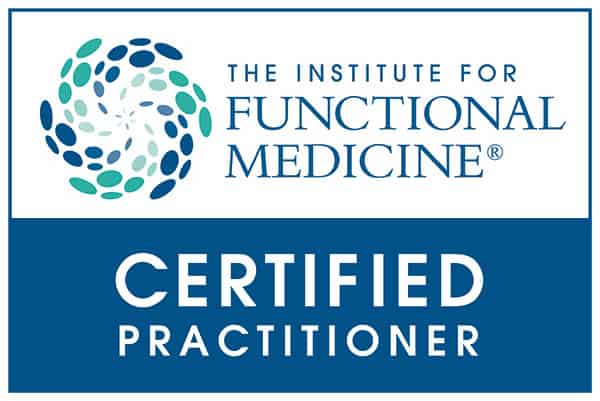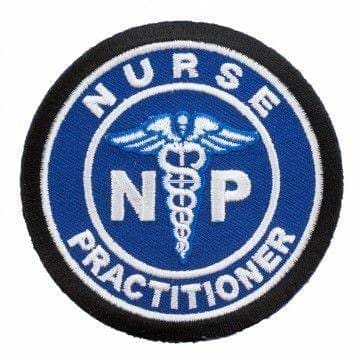Athletes
Sports Spine Specialist Chiropractic Team: Athletes strive to achieve their body’s maximum performance by participating in numerous training regimens consisting of strenuous exercises and physical activity and ensuring they meet all of their body’s nutritional requirements. Through proper fitness and nutrition, many individuals can condition themselves to excel in their specific sport. Our training programs are designed for athletes that look to gain a competitive edge in their sport.
We provide sport-specific services to help increase an athlete’s performance through mobility, strength, and endurance. Occasionally, however, the excess workouts can lead many to suffer injuries or develop underlying conditions. Dr. Alex Jimenez’s chronicle of articles for athletes displays in detail the many forms of complications affecting these professionals while focusing on the possible solutions and treatments to follow to achieve overall well-being.

by Dr Alex Jimenez DC, APRN, FNP-BC, CFMP, IFMCP | Chiropractic, Fitness, Lower Back Pain
Choosing to receive treatment from a chiropractor won�t stop your slice or improve your putting, but it just might end up improving your overall game and lowering your score. It�s no secret that golf can be hard on your lower back. The quick, repetitive twisting motion required to swing a club puts your back at risk every time you play, and if you already have a back injury you�re putting other muscle groups at risk. Keep reading to learn how to improve your golf game in El Paso with chiropractic care.
How Chiropractic Boosts Your Game
Since a chiropractor is specifically trained to treat the entire neuromusculoskeletal system they are able to help golfers reduce the amount of stress and strain placed on their bodies. The lower back does undergo a lot of stress with the torque of a standard golf swing, but there are other body parts that can affect your golf game, too. Pain or range of motion issues in your shoulders, elbows, knees or wrists will definitely affect your swing and lead to inflated scores.
Chiropractic treatment can put your body back into alignment, remove nerve compression, and improve blood flow to vital muscles. When you are free from pain and your mobility isn�t hindered in any way, you can swing freely and focus on your game.
It All Begins With You
Although you can improve your golf game in El Paso with chiropractic, taking steps to help yourself will improve it even further. Arrive early at the course and do some warm up stretching and light swings before your game. Whether you hit some balls at the practice range or not, stretching and loosening up is key. You�ll also want to perform some light stretches after your round to keep your muscles loose and lengthened.
It�s easy to get dehydrated out on the golf course, but not drinking enough can set the stage for a strained muscle or similar injury. Make sure you drink plenty of water before, during, and after playing golf, especially if it is hot outside. If you walk the course when you play, avoid carrying your bag and pull it instead. Carrying a heavy golf bag over 18 holes can cause disc problems and irritate nerves.
If you have the option, avoid wearing metal spikes when you play. They have the potential to get stuck in the ground during your swing, causing a serious knee or back injury. And if you find that your swing is causing pain in any area of your body, consider taking lessons to learn a more efficient way to swing your clubs. If you follow these tips you�ll enjoy a pain-free round every time out.

Call Today!

by Dr Alex Jimenez DC, APRN, FNP-BC, CFMP, IFMCP | Athletes, Exercise, Fitness
It�s easy to take�walking for granted�as a form of exercise. After�all, it�s how we move�around in the world every�day, so it can be hard to�believe it�ll knock off�pounds. But research�shows that walking is a�surprisingly strong health�and fitness strategy.�It matters how you walk,�though. A study in Journal�of Applied Physiology found�that walking quickly with�hand and ankle weights�was comparable to slow�running. And research�from the University of�Virginia revealed that�mixing short, fast walks�with longer, more leisurely�ones was an effective�way for obese women to�lose belly fat.
Walking can even help prevent disease. A study in the journal Arteriosclerosis, Thrombosis, and Vascular Biology showed that walking at a decent clip reduced participants� risk of developing high blood pressure, cholesterol, and blood sugar levels as much as running.
It�s clear that our bodies were made to walk, but there�s more than one way to get the most out of those daily steps. We spoke to three experts with different approaches so you can choose the right method for you. Whether you�re time-pressed or want to ease into running, our experts have got you covered.
RELATED: How One Woman Shed 137 Lbs. With Strength Training and Simple Diet Changes
The Celebrity Trainer:�David Kirsch
Kirsch, who has trained the likes of Jennifer Lopez and Kate Upton, believes even the fittest people can benefit from walking more. “From a purely physiological standpoint, walking raises your heart rate and burns calories,”�he says. “But it�s also a great way to increase your mind-body connection, focus on your breath, spend time in nature, meditate, and de-stress.”
David Kirsch’s go-to walking workout:�For beginners, it�s all about working up to 10,000 steps a day, says Kirsch. That�s the preset daily goal on most fitness trackers because it�s considered a good target for heart health and weight maintenance. But after you�ve mastered that, challenge yourself to hit 15,000 to 25,000 daily steps. “Ten thousand should become the bare minimum,” he says. To amp up the intensity of your walks, try a hilly landscape or wear two- to three-pound ankle and hand weights. You can also incorporate some toning exercises every few minutes, like jumping jacks, walking lunges, squats, or squat jumps, suggests Kirsch. Adding these moves in intervals�will help you build muscle,�improve heart health,�and increase endurance.�”Walking is so good for�you,” he says. “It�s a great�start and supplement to�any wellness program.”
The Weight-Management Physician:�Amy Rothberg, MD
“Walking is one of the best tools for weight maintenance,” says Dr. Rothberg, director of the University of Michigan�s Weight Management Clinic. “It�s aerobic, it engages some of the biggest muscles, and it�s feasible for most people.”
Dr. Rothberg’s go-to walking workout:�To maintain a healthy weight, Dr. Rothberg recommends walking for at least 30 minutes five days a week. Some good news: You don�t have to log a half hour all at once. “You can do your 30 minutes in 10-minute bouts throughout the day,” she says, “and those add up.” Plus, when you walk for shorter periods, you can generally go at a faster speed, which may be even better for you than walking slowly for 30 minutes straight, since more vigorous activities can help increase your overall fitness level. And even lower-intensity exercises like fast-paced walking can help burn some of the body�s stored fat. Walking in chunks can give you little boosts of confidence to keep you motivated, too. “Whether it�s parking farther away or walking to meet a colleague, you get a sense of accomplishment,” she says. “It�s these little successes that end up establishing good habits.”
The Running Coach:�Jeff Galloway
Galloway is the creator�of the Run Walk Run�training method, which�helps walkers and longtime�runners alike stay in shape�and prep for races. Adding�running intervals to your�walks can help you burn�more calories, and running�has been shown to boost�appetite-suppressing�hormones, notes Galloway.�Plus, easing into running�like this allows you “to go�farther while feeling better�and avoiding injury,” he says.
Jeff Galloway’s go-to walking workout:�To introduce faster segments into your walks, start by jogging for 5 to 10 seconds per minute for 10 minutes, gradually working your way up to 30 minutes. Once you�ve conquered that goal, begin adding longer periods of jogging until you can jog for 30 seconds per minute for 30 minutes. Eventually, you can build up to shorter walk breaks�for example, walking for 30 seconds and running for 60. This is an excellent way to train for a 5K or even longer race, says Galloway. (For regular runners looking to add in strategic walking breaks, Galloway suggests alternating 90 seconds of running and 30 seconds of walking if you run a 10-minute mile on average. If you average a 12-minute mile, try alternating 60 seconds of running and 30 seconds of walking.)
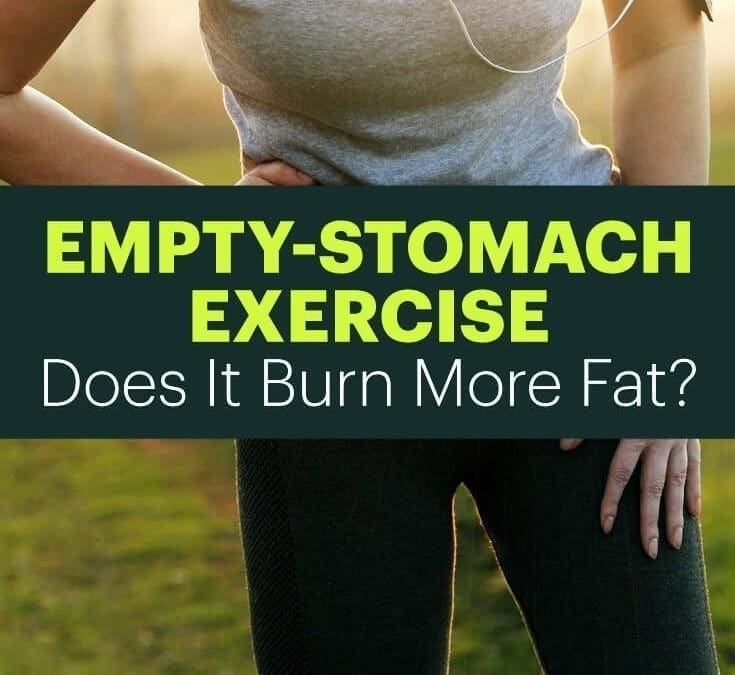
by Dr Alex Jimenez DC, APRN, FNP-BC, CFMP, IFMCP | Fitness, Intermittent Fasting, Natural Health, Weight Loss, Wellness
El Paso, TX. Chiropractor Dr. Alex Jimenez examines working out on an empty stomach.
For a thing that should be simple, working out doesn�t consistently feel that way. There�s choosing the best fat-burning workout. There�s that pesky question of whether diet or exercise is essential for fat loss. And there�s a new one to throw into the mix: whether working out on an empty stomach can help you shed weight faster.
Bodybuilders swear by it while many people religiously enjoy their pre -workout protein shake. What exactly gives? Should you hitting the gym on an empty stomach and be forgoing food in the event you want to lose pounds?
Regrettably, like so much fitness guidance, this falls into the grey, �it depends� place. Let�s inquire.
Work Out On an Empty Stomach?
The theory behind exercising having an empty tummy is that when you squeeze before breakfast, your body burns fat faster.
See, what occurs is that glycogen, a type of carbohydrate which our bodies shop, � runs out� overnight. When you wake up and hit the gym first thing in the morning, because your body is low on carbs, the notion is the body will really turn to fats next to obtain energy. (1)
Things do get tricky because if the body is completely from glycogen � you had an early dinner, got the full nighttime�s remainder and perhaps snoozed an extra hour or two � the body might bypass fat burning and head directly to muscle shops instead, chipping away at body definition.
�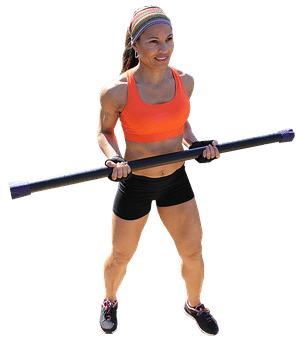
Advantages of Working Out On an Empty Stomach
So what does the science say the huge benefits before working out to missing breakfast?
1. Burn Fat Quicker. One study followed 12 active males after breakfast who ran on the treadmill either or while they were still fasting from the night time before. (2) The men who hadn�t broken their fast, i.e. hadn�t had breakfast, burned up to 20 percent more body fat during the same work outs.
What�s especially fascinating is that the guys who jumped breakfast didn�t overeat after or attempt to otherwise make � for the early AM calories up they missed out on. So obtaining a head start on your fitness regimen pre-breakfast can help you lose more fat without making you sneak in extra calories later.
2. Improve Performance. There�s evidence that exercising when your carb levels are low, like when you�re on an empty stomach, actually helps improve functionality during �normal� workouts. The concept behind �train low, compete � that is high is that working out in a glycogen- low state helps the body become more efficient at burning off fat so at times when carb levels are quite high, the body is primed and raring to go. (3)
3. Time-Restricted Eating Can Help In Losing Weight. Work Out out on an empty stomach ties into the thought of time-limited eating. On this diet program, it is possible to eat as much as you want of anything you desire. The only caveat is that you just eat strictly between certain hours, with 12�16 hours of time where you don�t eat anything.
The notion is that when our bodies understand just when we�re going to be eating, our hormones react by burning fat and supporting weight reduction during the food-free hours. Scheduling workouts during fasting hours could encourage the body to burn more fat, particularly when you�re exercising first thing in the morning.
4. Improve Body’s Response To Insulin. When we eat, our bodies release insulin to consume all of the nutrients in the foods we�re enjoying. However, as soon as we�re eating way too many carbohydrates and sugar, our bodies become resistant to insulin � it�s unable to do its job at the same time.
All that insulin can bring in regards to an assortment of chronic illnesses and builds up. Among many health benefits of fasting, however, is reducing that susceptibility to insulin. Without continuous food, insulin isn�t so our bodies don�t become immune to the hormone, created often.
5. Inspiration To Work Out More.�Let�s confront it � we�re all super active. By working out each morning before stopping to make breakfast, having that cup of coffee or whatever it’s that might derail you in the mornings, you can get your calorie burning out of the way with no distractions that happen after.
In the event you have to be out of your house by 8 a.m., it�s a lot easier to hit the gym before eating as opposed to sitting down for breakfast, waiting to digest and then working out.
When It�s Not Wise To Work Out Without Any Food On Board
But working out on an empty stomach might not be the finest idea for everybody. For each study that says burning fat occurs more easily when you exercise before eating, there�s another one that says the opposite. An International Journal of Sport Nutrition and Exercise Metabolism study found that a pre-workout snack or light meal actually helps burn body fat. (4)
Plus study found no difference in weight reduction between women who ate a meal-replacement shake before exercising without eating and those that got directly in their workouts. (5)
Another problem is that without any fuel in your belly, you may well not be working out as hard as you could. A pre-workout snack that�s a mix of carbs, protein and healthy fats can give you the energy you need to push yourself harder.
That extra fire might be just things you must finish high-intensity interval workouts like Crossfit or Tabata, which actually help you burn off more calories in a briefer amount of time. These are intense work outs where you�re likely to need to max out your energy.
And when you�re training for endurance sports like long-distance racing or a triathlon, working out on an empty stomach might work for short distances, but you definitely wish to consume before longer work outs � depending on how much you�re going, you might even need to refuel during training.
Finally, if you�re someone who psychologically has to realize which you aren�t going to burn out mid way because you�ve eaten through exercising, it�s not a great day to work out on an empty stomach. Same goes for people who are diabetic or experience low blood sugar. Eating a small bite will make sure that you remain safe throughout your workout.
Final�Thoughts
I wish I possibly could tell you that working out on an empty stomach will cause results that are better. But because numerous variables are at play � how fit you are, what type of exercise you�re doing and the way you workout best � it�s impossible.
What is vital is that you just remain hydrated before, during and following your workout. Drinking enough water will keep up energy levels. Drinking enough H2O can also keep pounds from increasing because thirst is, in addition, mistaken for hunger.
Maybe more notably than whether you eat before a workout is what you�re having later. A mix of protein and healthy carbs can help muscle tissue recover. Drinking a post-workout recovery shake or eating eggs with veggies in the first 45 minutes after exercise while your blood is circulating well is ideal. Take a look at my list of 43 greatest post-workout meals for quicker results � you�re certain to find something you�ll adore.
Eventually, whether you�re working out on an empty stomach or not, kudos to you for getting out there and taking control of your quality of life. Keep up the work outs!

Call Today!

by Dr Alex Jimenez DC, APRN, FNP-BC, CFMP, IFMCP | Diets, Fitness
Drinking 32 ounces of energy drink is associated with potentially harmful changes in blood pressure and heart function that are beyond those seen with caffeine alone, according to a new study.
There are more than 500 energy drink products on the market, and their increased popularity is matched by a significant rise in energy drink-associated emergency department visits and deaths.
Manufacturers and fans of these products claim they are as safe as caffeine, but there is little evidence to support that claim.
Caffeine in doses up to 400 mg (about five cups of coffee) is generally recognized as safe by the Food and Drug Administration. While energy drinks usually contain caffeine, little is known about the safety of some of their other ingredients the study team writes in the Journal of the American Heart Association.
To see what effects these other components have, researchers compared physical changes in a group of 18 healthy men and women after consuming a commercially available energy drink and after drinking another concoction with the same amount of caffeine but none of the other ingredients.
Besides 320 mg of caffeine – the amount in about four cups of coffee – the energy drink contained 4 ounces of sugar, several B vitamins and a proprietary “energy blend” of taurine and other ingredients that are often found drinks like Monster Energy, Red Bull and 5-Hour Energy.
Sachin A. Shah of David Grant Medical Center on Travis Air Force Base and University of the Pacific in Stockton, California, and colleagues measured the participants’ blood pressure and used an electrocardiogram (often called an ECG or EKG) to measure heart electrical activity for 24 hours after the subjects consumed the drinks.
An ECG change known as QTc prolongation and sometimes associated with life-threatening irregularities in the heartbeat was seen after drinking the energy drink, but not after drinking the caffeine beverage, the study team reports.
Several drugs have been withdrawn from the market just for causing ECG changes of a similar magnitude, the authors note.
Blood pressure increased by close to 5 points after drinking the energy drink, but by just under 1 point after drinking the caffeine beverage. Blood pressure also remained elevated six hours later.
These changes are by no means worrisome for healthy individuals, the researchers say, but patients with certain heart conditions might need to exercise caution consuming energy drinks.
Larger studies are needed to evaluate the safety of the noncaffeine ingredients contained in energy drinks, they conclude.
“The energy drink industry claims that their products are safe because they have no more caffeine than a premium coffee house coffee,” said Dr. Jennifer L. Harris from University of Connecticut’s Rudd Center for Food Policy and Obesity in Storrs, who wasn’t involved in the study.
“However, energy drinks also contain a proprietary ‘energy blend,’ which typically consists of stimulants and other additives. Some of these ingredients (including taurine and guarana) have not been FDA-approved as safe in the food supply, and few studies have tested the effects of caffeine consumption together with these ‘novelty’ ingredients,” she said by email.
“On top of that, energy drinks are highly marketed to adolescent boys in ways that encourage risky behavior, including rapid and excessive consumption,” she said. “As a result, emergency room visits by young people in connection with energy drinks are rising.”
Any research that compares the effects of consuming energy drinks versus caffeine alone provides important evidence for public health advocates who have urged the energy drink companies to stop targeting youth with these potentially harmful products, Harris added.

by Dr Alex Jimenez DC, APRN, FNP-BC, CFMP, IFMCP | Exercise, Fitness, Weight Loss
The problem: When I gain weight, it goes straight to my middle
You know those squishy midsection lumps you can pinch? That’s subcutaneous fat, located just beneath the surface of your skin, says Ursula White, PhD, an obesity researcher at the Pennington Biomedical Research Center at Louisiana State University. Another type of fat, called visceral fat, sits deep within the abdominal area, surrounding the organs. This is the kind that’s considered especially harmful; research has found that excess amounts of visceral fat may put your at a higher risk of heart disease and type 2 diabetes.
Where we pack on flab may be determined by genetics, says White. But in general, notes Tara Collingwood, RDN, coauthor of Flat Belly Cookbook for Dummies ($23; amazon.com)�when people gain weight, it often increases their amount of visceral fat. That’s one reason a diet that’s too high in simple carbs is so problematic: “Eating too many low-fiber, high-sugar foods can spike levels of insulin, which then stores all those calories as fat,” explains Collingwood.
The solution:�You can’t fight genetics�but you can make it harder for your body to store excess calories as fat by limiting your consumption of refined carbs. Eat more high-fiber foods instead, such as oats, beans, and sweet potatoes, suggests Leslie Bonci, RDN, owner of Active Eating Advice. Also, aim to eat three meals and one snack a day�and have them on a set schedule, recommends Bonci. One 2014 study found that eating erratically was linked to a bigger waist circumference than sticking to a schedule.
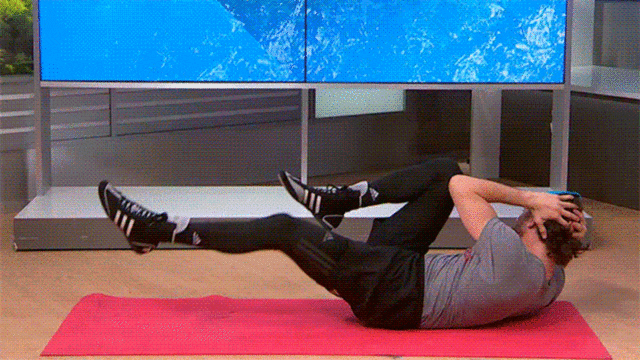
by Dr Alex Jimenez DC, APRN, FNP-BC, CFMP, IFMCP | Fitness, Health, Wellness
Throwing punches in the ring is only part of the reason why professional boxers have knockout bodies. They also sculpt their strong physiques with tons of cross training—with a focus on building a rock-solid core. “Core conditioning is crucial for boxing,” says Chris Algieri, a professional boxer and two-time world champion. “Most of the power in a punch comes from being able to forcibly rotate your core, giving the strike explosive power.”
A sturdy core also helps keep a boxer’s body safe during a match. “The boxer has to be able to take blows to the body without damaging their ribs and organs,” explains Algieri. “The muscles in the abdominals and obliques act as body armor against opponents’ attacks.”
You don’t have to be a pro fighter to reap the ab-chiseling benefits of a boxer’s training. In the video above and in the gifs below, Algieri demonstrates his go-to conditioning exercises for a strong, stable core that’s ready to roll with the punches.
Bicycle crunches
This move is great for boxers because it focuses on core stability, while also rotating the shoulders and incorporating the lower body. Plus it’s an athletic movement that hones coordination.
What to do: Begin by laying on your back with hands behind head, then alternate bringing each elbow to the opposite knee, while maintaining a tight core. Do 10-20 continuous crunches with each elbow. Rest and then repeat 2-3 times.
Side plank

This is a key exercise for a boxer, since the movement promotes both core stability and shoulder girdle strength—crucial for throwing those strong punches.
What to do: Turn to one side with your legs extended and your feet and hips planted on the ground. Now, put your elbow under your shoulder and push your abs and hips up until the top of your body forms a straight line. Hold for 30-60 seconds. Return to the starting position, then move to the other side and repeat.
RELATED: Whittle Your Waist With These 5 Core Exercises
Alternating hands plank

This is an awesome move that challenges balance and coordination, as well as core strength.
What to do: Start off in a plank position. With your weight resting on your left forearm, slowly lift your right arm off the ground, reaching it out in front of you. Lower back down, and alternate to the left arm. Do this 10 times with each arm.
T-push-up

The T-push-up will help you build core stability, as well as posterior shoulder strength and flexibility. Boxers experience a lot of wear and tear on the shoulder, so it’s important to strengthen each part of the shoulder. Plus, the push-up works the anterior deltoid, which is important for movement and power when punching forward.
What to do: Begin in a standard push-up position. Lower your body slowly, as you would for a regular push-up. But as you push yourself up, turn to one side, raising that side’s arm towards the ceiling. Return your hand to the floor, then repeat on the other side. Do this 15 times on each side.
RELATED: 4 Ab-Sculpting Plank Variations
Alternating leg with ball pass + seated underhand pass

This exercise really works your lower abdominals and also promotes full-body coordination. Boxers will often explode out of a crouched position, so it’s important to have strong lower abs to support this movement. And the second part, seated underhand pass, uses isometric holds to promote core strength and stability. Plus it hones the hand-eye coordination necessary to be a great fighter.
What to do: From seated position with feet off the ground, squeeze your abs and pull knees in as you pass a weight (or medicine ball or an imaginary object) under your bent leg. Repeat 20 times.
Accordion side crunch

This isometric hold promotes core strength, while the crunch tones your obliques and increases endurance. It’s also another move that promotes coordination between the upper and lower body.
What to do: From side position, simultaneously crunch and pull knees in, keeping feet off the floor and focusing on your obliques. Repeat this 15-20 times.
Russian twist

This classic ab move will improve your core rotational strength, which is important for maximizing power when throwing a punch.
What to do: Starting in a seated position, explosively twist from one side to the other. Aim to twist to each side 15-20 times.
Sit-up with a twist

This is a full-core movement, which works you upper and lower ab muscles in the initial sit-up, then fires up your obliques during the twist. Similar to Russian twist, this sit-up variation strengthens rotational core movement and improves your ability to generate power from the core (aka the essentials for throwing a punch.)
What to do: Starting on your back, roll up into a sit-up, with one leg extended and one foot pressed into the floor, knee bent. From here, explosively twist to the side, bringing your opposite elbow to the bent knee. Do this 15-20 times, then switch to the other side.

by Dr Alex Jimenez DC, APRN, FNP-BC, CFMP, IFMCP | Diets, Fitness
When you’re on a diet, you may gravitate to the “diet” food section at the supermarket, but beware: Diet foods can destroy your diet and make you fat. Although labeled “diet” or “low-fat,” they may be high in sugar and can make you gain weight, not lose it.
Researchers from the University of Georgia fed rats a diet high in sugar but low in fat that was meant to imitate many popular diet foods, and found that the animals gained weight when compared to rats fed a balanced rodent diet.
In addition, the high-sugar diet induced a host of medical problems, including liver damage and brain inflammation.
“Most so-called diet products containing low or no fat have an increased amount of sugar and are camouflaged under fancy names, giving the impression that they are healthy, but the reality is that those foods may damage the liver and lead to obesity as well,” said the study’s principal investigator, Krzysztof Czaja.
“What’s really troubling in our findings is that the rats consuming high-sugar, low-fat diets didn’t consume significantly more calories than the rats fed a balanced diet,” said Czaja, an associate professor of veterinary biosciences and diagnostic imaging in UGA’s College of Veterinary Medicine.
“Our research shows that in rats fed a low-fat, high-sugar diet, the efficiency of generating body fat is more than twice as high — in other words, rats consuming low-fat high-sugar diets need less than half the number of calories to generate the same amount of body fat,” he said.
Researchers divided rats into three groups and monitored their body weight, caloric intake, body composition, and fecal samples over a period of four weeks. One group consumed a diet high in fat and sugar, another group was fed a low-fat, high-sugar diet, and a third group was given a balanced or “normal” diet.
Both the low-fat, high-sugar and high-fat, high-sugar groups showed significant increases in both body weight and body fat when compared to the balanced group. They also showed an increase in liver fat.
The accumulation of liver fat in the high-sugar, low-fat group, Czaja said, “is a very dangerous situation, because the liver accumulating more fat mimics the effect of non-alcoholic fatty liver disease.”
Non-alcoholic fatty liver disease is caused by fat buildup in the liver. Serious forms of the disease can cause liver damage similar to that caused by heavy alcohol use.
The two high-sugar diets also caused chronic inflammation in the intestinal tract and brain. Previous studies found that the brain inflammation changed signals in the brain that controlled the ability to determine when one is full.
“The brain changes resulting from these unbalanced diets seem to be long term, and it is still not known if they are reversible by balanced diets,” Czaja said.
Previous studies have shown other problems with low-fat diets. A study published in the Journal of Affective Disorders linked low-fat diets with depression. Low-fat diets have also been linked to heart disease. One study found that diets low in fat lowered the body’s level of HDL — the “good” cholesterol that helps protect against heart disease.


















